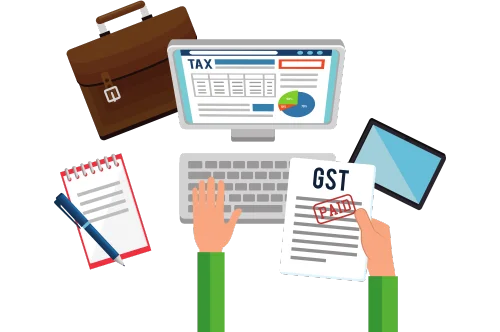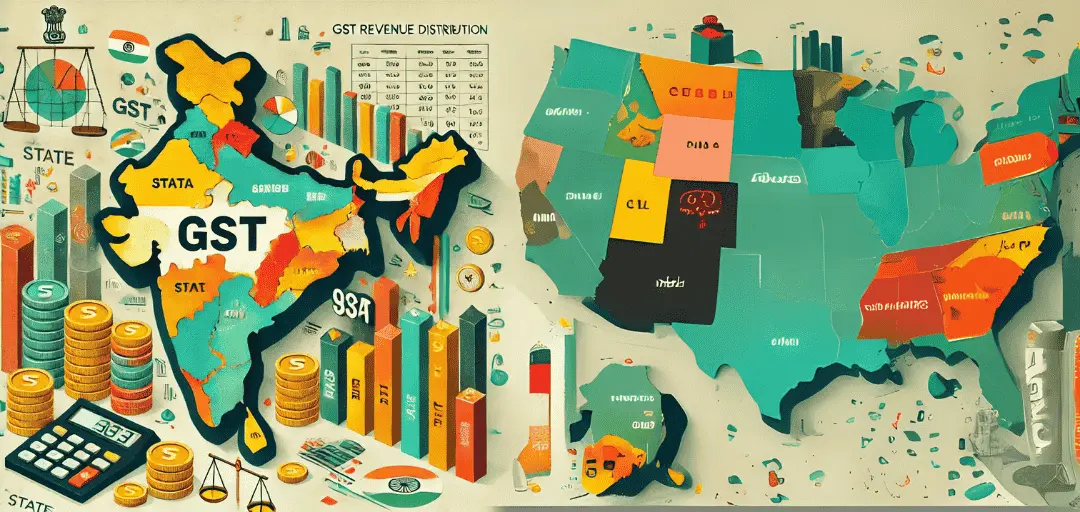How Different States in India Benefit (or Lose) Under GST Revenue Distribution
The implementation of the Goods and Services Tax (GST) in India marked a major shift in the country’s taxation system. While GST streamlined indirect taxes, it also significantly impacted state revenues, raising concerns about financial imbalances. The GST compensation to states has played a crucial role in ensuring that states do not suffer revenue losses. This blog explores how different states benefit or lose under GST revenue distribution and the broader implications of this system.
Understanding GST and Revenue Distribution
Before the introduction of GST in 2017, states had the authority to levy various indirect taxes, such as VAT, entry tax, and entertainment tax. With GST, these taxes were subsumed, leading to a centralized taxation system. Since GST is a consumption-based tax, states with higher consumption patterns benefit more than manufacturing-heavy states.
To address potential revenue losses, the central government introduced the GST compensation to states mechanism, ensuring that no state suffered financial distress due to the transition. However, the effectiveness of this mechanism and its long-term impact remain debated topics.
How GST Compensation to States Works
Under the GST Compensation Act, the central government guarantees a 14% annual revenue growth for states, based on their pre-GST tax collections (2015–16 as the base year). If a state’s GST revenue growth falls short of this target, the center provides compensation from the GST Compensation Fund, which is funded through a cess on luxury and sin goods (like tobacco and automobiles).
However, the COVID-19 pandemic severely impacted revenue collections, leading to delays in GST compensation to states. This resulted in financial stress, especially for states highly dependent on compensation.
States That Benefit from GST
1. Consumption-Heavy States
States with high consumption, such as Maharashtra, Uttar Pradesh, and Karnataka, benefit the most from GST since they generate higher revenue from goods and services sold within their borders.
2. Tourism-Driven States
States such as Goa, Kerala, and Rajasthan, which rely on tourism, have seen a stable revenue stream as GST ensures that services like hospitality and entertainment contribute significantly to state earnings.
3. E-Commerce and Service-Oriented States
States like Telangana and Karnataka, with thriving IT and e-commerce industries, benefit from GST as services are taxed at the point of consumption, leading to greater revenue generation.
States That Face Losses Under GST
1. Manufacturing-Heavy States
Before GST, manufacturing states such as Gujarat, Tamil Nadu, and Maharashtra collected substantial revenues through entry tax and VAT. Since GST is a destination-based tax, these states now receive less revenue than before.
2. Smaller States with Low Consumption
States like Himachal Pradesh, Uttarakhand, and the northeastern states have suffered losses since they rely on central assistance and do not generate substantial GST revenues due to lower consumption.
3. States Dependent on Compensation
Many states, including Punjab, Chhattisgarh, and West Bengal, have been reliant on GST compensation to states. When compensation payments were delayed or reduced, these states faced severe fiscal stress.
Challenges in GST Compensation to States
Revenue Shortfalls – The cess collections that fund GST compensation to states are sometimes insufficient, leading to payment delays. The economic downturn during COVID-19 worsened this situation.
End of Compensation Period – Initially, GST compensation was assured for five years (till June 2022). With this period ending, many states have been demanding an extension to prevent revenue losses.
Disparity in Revenue Sharing – Some states argue that GST has widened economic inequality, benefiting developed states while burdening smaller and industrial states.
Future of GST Revenue Distribution
The debate over GST compensation to states continues, with demands for an extended compensation period growing stronger. The GST Council is actively discussing ways to ensure a more balanced revenue-sharing model, possibly through revised tax slabs and alternative compensation mechanisms.
For India’s federal structure to thrive, it is crucial to maintain a fair revenue-sharing approach. While GST has streamlined taxation and improved ease of doing business, the concerns of states—especially manufacturing-heavy and smaller states—must be addressed to ensure equitable financial growth.
Our GST Services

All E-commerce Tax services
E-commerce tax services help online sellers navigate GST registration, compliance, return filing, TCS management, tax planning, and audits, ensuring efficient tax management and legal compliance.

GST Filing
GST filing is the process of submitting tax returns to the government, detailing sales, purchases, and taxes paid or collected, ensuring compliance with GST laws.

GST Registration
GST registration is the process where businesses obtain a GSTIN from the government, allowing them to collect taxes, claim input tax credits, and comply with GST laws.





